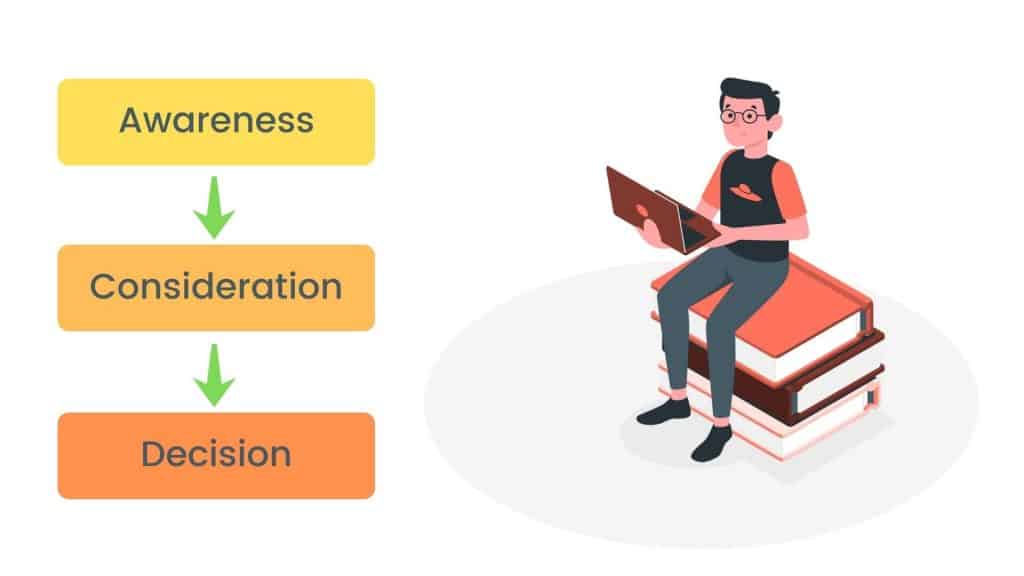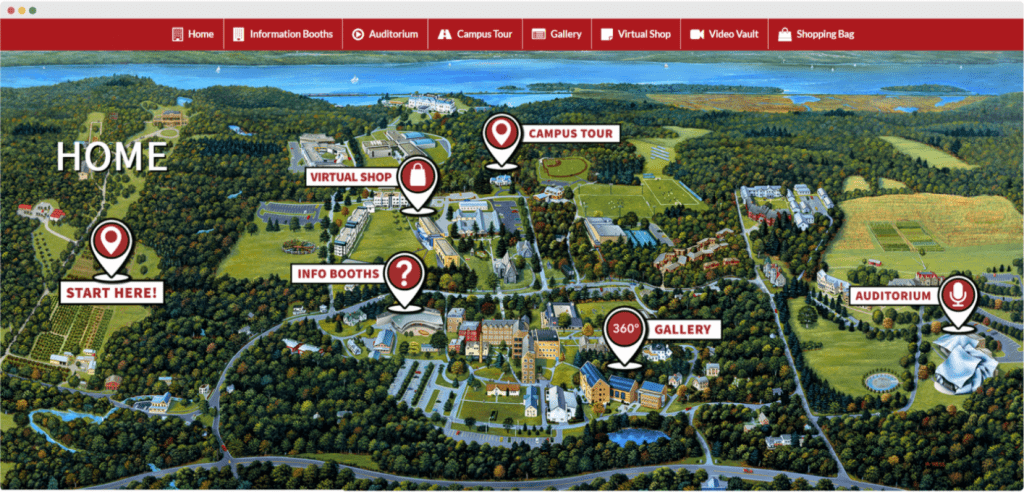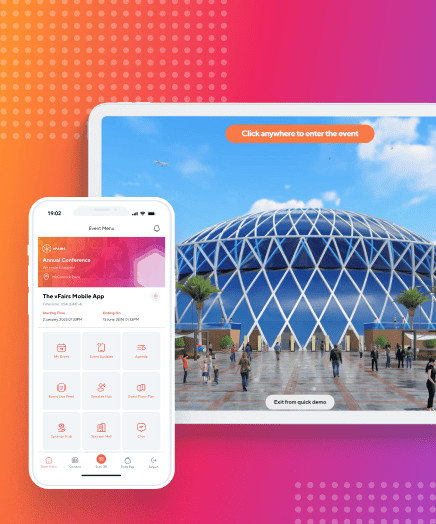If you aren’t even sure whether you’d want to attend a university, will you fly halfway across the world to attend its open day? Likely not.
That’s why universities started to experiment with virtual open days. These events offer a cost-effective and accessible way for students to learn about university programs without the hassle of driving, or worse, flying to the venue.
But it’s not enough to just host a virtual open day and expect students to choose your university for their academic aspirations. You need to know whether your virtual event is having an effect on them. Are your prospects able to easily learn about all your programs? Are they able to see the campus and get an experience of student life? Are they easily able to talk to the faculty and connect with successful alumni?
Budgets are a major concern when you’re running a university. And any time you’re spending a lot of money, you need to know if it brought you the desired returns. Track your attendees’ user journeys at your virtual open days to measure how successful they are in getting top students to apply to your programs.
What do we mean by the “user journey”?
The user journey doesn’t start when they log into your platform. That first interaction happens much earlier on.
The user journey starts when your prospects see event promotions on social media or receive invitation emails. Then, if you get that part right, they’ll sign up for the event and eventually show up for it. Here, they’ll interact with various sources, and then finally, some prospective students will apply for your programs.

It’s much like a conversion funnel.
- The Awareness stage is where your prospects learn about the event.
- The Consideration stage is them attending the event, talking to your faculty, going over the booths, and evaluating your programs.
- The Decision stage is when prospective students finally decide to apply for a program.
Why would you want to track this?
Tracking user journeys helps universities understand bottlenecks in the user experience. Ideally, you want your prospects to go from the awareness stage right down to the decision stage and take an action to sign up for your program. But how many attendees will do that?
- A small percentage of the prospects that saw your event promotions will register for the event.
- A small percentage of these registrants will attend the event.
- A small percentage of these attendees will engage and talk to the booth representatives, collect a prospectus, and meet with the faculty.
- A small percentage of these engaged attendees will then finally sign up for your programs.
Notice how as you go down the funnel, the number of prospects keeps decreasing. And for any event, the goal is to optimize for the best ROI. To do that, you’ll have to carefully track the user journey and optimize it at every stage so that more and more prospects pass down the funnel, improving your overall conversion rate.
Tracking the different stages of the user journey
Let’s take a look at how you can track prospective students through their journey with your virtual open day.
1. Awareness: Announcing the event
User journey tracking should ideally start from the awareness stage: When prospects learn about the event.
And what are the different streams of announcing a virtual open day? Targeting a mix of these streams will help you get your event across the most pair of eyes:
- Emails
- Social media channels
- Pay-per-click ads
- Press release
- Influencer marketing
Next, you’ll want to apply UTMs to each of the channels you target. This will help identify campaigns that struck the most with your target audience. And it helps answer questions like how many people who received the email actually ended up signing up for it. Any numbers that raise flags will indicate where you need to fix your marketing strategy.
You can also use other metrics like open rates and click-through rates to optimize your campaigns, like CTA placement and web copy.
2. Consideration: Attending the event

This is where you’ll get the most data from your attendees. Since virtual events are still new for some, nailing the ease-of-use is absolutely critical!
Evaluate how easily attendees were able to go from one place to another. Here are some questions you’ll want to answer.
- Were they able to find the rooms they were looking for?
- Did they easily find the program booths?
- Did they know how to interact with the booth representatives, initiate chats, and download the material that they needed?
- Did they attend the welcome session or the subsequent speaker sessions?
- Were they interested in any games that you offered?
- What kind of areas were the most popular?
By tracking this information, you’ll be able to measure the quality of your event, the expectations that attendees have from you, and how well you’re meeting them.
If a lot of prospects are going to the alumni lounge, that means that your target audience cares a lot about how past students feel about the campus. If they’re going to the Computer Science booth, then most of your attendees are aspiring computer scientists. Key insights like these will help you optimize your upcoming marketing campaigns and also plan future events better.
But how will you do this? Certain virtual events platforms like vFairs come with user journey mapping. This feature enables you to see exactly where a certain user went, from the booths they visited to the sessions they saw. You can also filter specific actions and view individual attendee details, and figure out their areas of interest.
This data helps accomplish three things:
- You can review individual users to see how they navigated through the event, how one action led to another, and how long they spent at each spot.
- You can apply this information to help you better understand user intent, i.e. how engaged they truly were with your open day.
- You can understand which user is interested in which program, and how can you target them after the event is over.
3. Decision: Signing up for a program or for updates
If your open day is accepting candidate applications, you’ll be able to calculate exactly how many students who attended, actually signed up for a program. This will be your conversion rate and essentially, the number that you want to improve.
Here are the factors that will influence this metric:
- How easily were students able to get information from all of your booths?
- How easy was the application form to fill out? Did people who start filling it out, go all the way?
- How well had you optimized the previous two stages of the conversion funnel? Did you optimize attendance and engagement with the event?
To calculate your conversion rate, you’ll have to divide the total applications you receive from the students who attended your event with the total sign-ups you had.
Conclusion
Virtual open days offer a great opportunity for universities to offer accessible open days and improve their pool of university applicants. But you can make the most of that opportunity by employing user journey mapping and tracking exactly how your prospective students are finding, interacting, and reacting to your virtual open day.
In this pursuit, be sure to start tracking the user journey from the very first time that they have with your event. How do they respond to learning about your event? And then, do they sign up and attend it? Do they show up to the event and talk to the representatives? Tracking data points like these will help you deliver hand-tailored virtual events that your attendees will appreciate. Plus, it will help you attract top candidates from around the world for all your programs.


